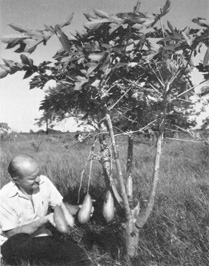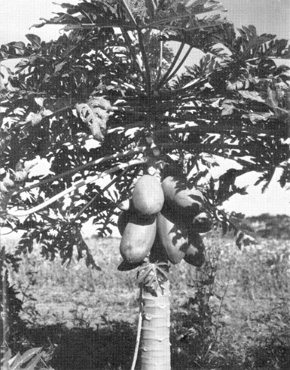
Figure 17. Papaya, a rapidly growing fruit appreciated everywhere in the Tropics. Cultural requirements: Hot tropical lowlands, seasonally dry. Description: Tree to 30 m. Propagation by seed. Fruit production in 10 years. Flowers November-December. Fruit matures in about 250 days. Fruit oblong, 15 cm long, 900 g; external color greenish brown, internal orange yellow. Utilization: Pulp eaten fresh. Pulp dry, with sweet flavor. Locally important but little potential for extensive cultivation. Reference: Wester 1925. Parinari curatellifolia Planch. ex Benth. Common names: hissing tree (English); parinaire (French). Origin: West Africa. Distribution: Africa. Cultural requirements: Tropical climate, light soils. |

Description: Tree to 8 cm. Propagation by seed. Flowers December-February. Fruit matures in 180 days. Fruit diameter 2.5-4 cm; external color red-dish brown, internal red. Utilization: Pulp eaten fresh. Seed roasted. Flavor sweet, pleasant. Locally important. Little potential for wider cultivation. References: Dalziel 1948, Irvine 1961. CombretaceaeTerminalia catappa L. Common names: tropical almond, Singapore almond (English); almendro (Spanish). Origin: Pacific islands, Southeast Asia. Distribution: Pantropic. Cultural requirements: Hot tropical lowlands. Grows well under great variety of conditions, including coastal strands. |